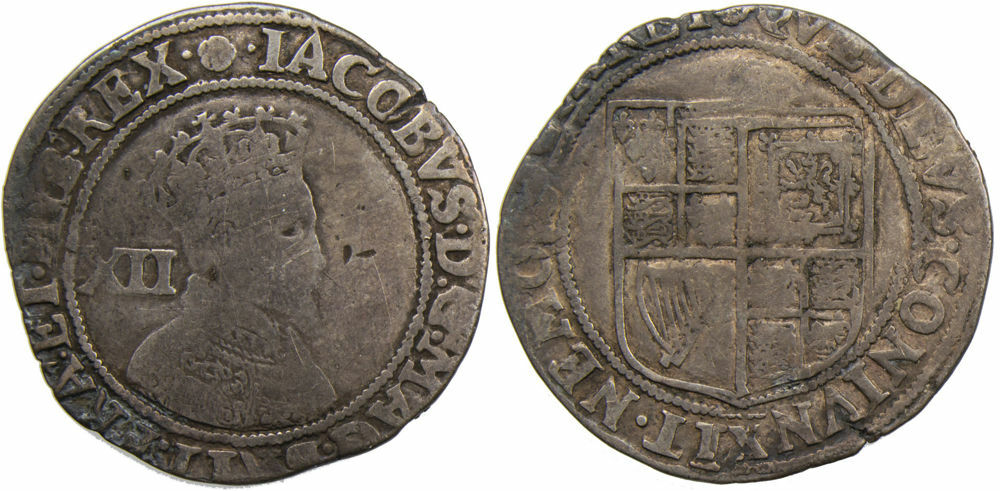Coincraft's 'Telling History with Money'
In this feature, we look back at historical events that have occurred on this date.
Updated on 05 November 2020
Today we remember the 5th of November’s Gunpowder Plot, the attempt to blow up the House of Lords and assassinate King James I. Thanks to recent mentions in popular culture, most notably in the film V for Vendetta and after the adoption of the Guy Fawkes mask by hacker group ‘Anonymous’, the 5 November is now perhaps one of the most well-known events in British history. A lot has been said and written about the Gunpowder plot and we feel that it would be redundant to retell the events that occurred on that night. Instead, we would like to tell you the story of the reign of the first Stuart King with coins, and present you with some fun facts about the King that Robert Catesby, Guy Fawkes, and others tried to replace from the throne.
- James I was King of Scotland before becoming King of England
Before he was crowned King James I of England he was King James IV of Scotland. He became King of Scotland on July 29, 1567, at thirteen months, by then he was already an orphan, his father (Henry Stuart) had been murdered on the 10 February that year and his mother had been forced to abdicate the throne. James had been ruling Scotland for thirty-seven years before becoming King of England in 1603.
- He sponsored an English translation of the Bible
From 1604 to 1611 King James I sponsored an English version of the bible that later became known as the Authorised King James Version. This version of the bible was published in 1611.
The 2nd coinage of this Shilling was made shortly after the King’s ascension to the English throne (1603), and around the same time (1604-05) he started sponsoring an English version of the Bible. Given the odds, it is very likely that this coin was in circulation during the 5 November of 1605.

- He ruled without parliament from 1614 to 1621
James’s Government following the Gunpowder Plot faced financial pressures, due to inflation as well as to profligacy and financial incompetence of the court. The King had dismissed parliament in December 1610 and would again repeat the action in 1614. This time, James I dissolved parliament just after nine weeks when the Commons hesitated to grant him the money he needed to pay off the crown’s debts. Without Parliament, James I managed to raise and save money by employing astute officials such as the businessman Lionel Cranfield. The Monarch also raised cash by selling earldoms and other dignities.
Another of the methods that James I used to raise money for the crown was to arrange a marriage between the Infanta Maria Anna of Spain (daughter of Philip III of Spain) and his son Charles I. The event was named the ‘Spanish Match’ and negotiations took place over the period 1614 to 1623.
During 1621-23 this Gold Laurel was coined and it would have been in circulation during the negotiations with Spain.

- During the last years of his reign, the King exercised no power
After his first son Henry died in 1612 Charles became the heir to the throne. Despite having a history of enmity with the Duke of Buckingham, Charles and Buckingham would later reconcile and form an alliance from which the King was excluded. In the last 18 months of his reign, the king effectively exercised no power, and Charles and Buckingham decided most issues. In his last days, James suffered from arthritis, gout, and kidney stones. He also lost his teeth and drank heavily.
The 3rd coinage of this penny would have been in circulation during the last years of James’s reign.


We hope we’ve inspired you to keep on collecting British Coins and would like to take this opportunity to wish you a wonderful Bonfire Night. If you haven’t done so already, have a look into the pages of Elizabeth I, the last Tudor Monarch and the Queen that preceded James I, as well as the Charles I page, his son, and the first British King to be executed.
Stay well, be happy, and keep on collecting.

























